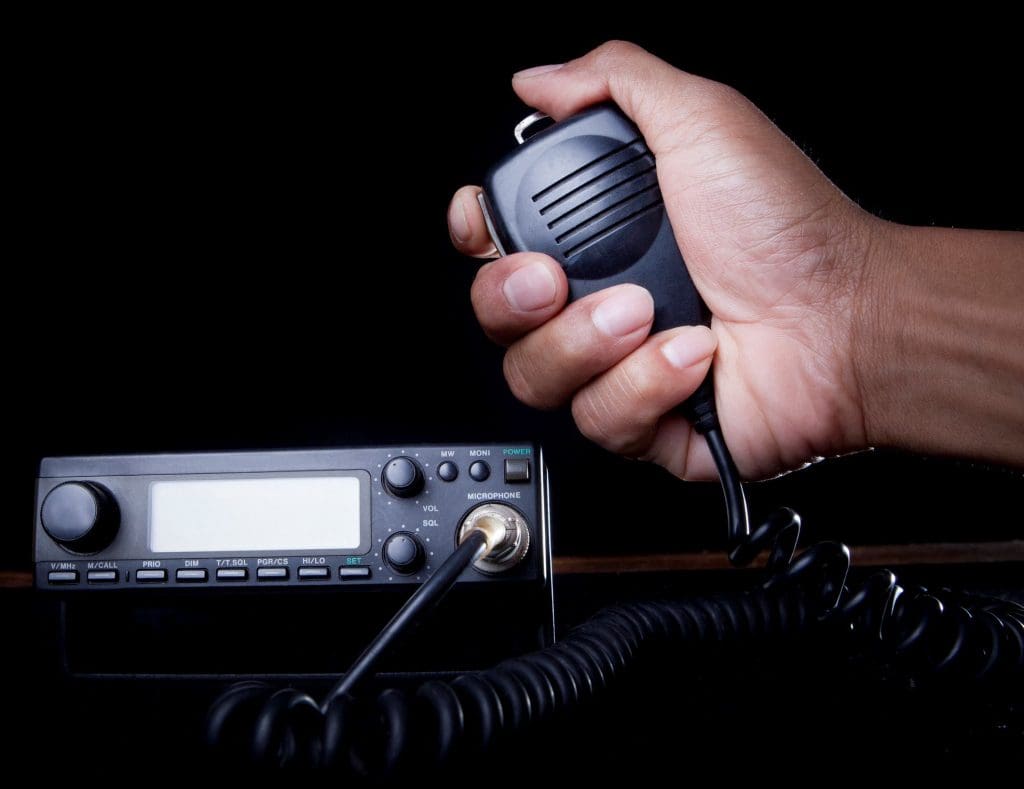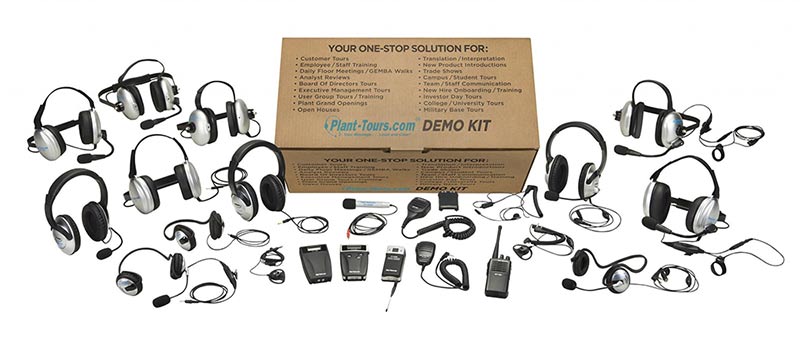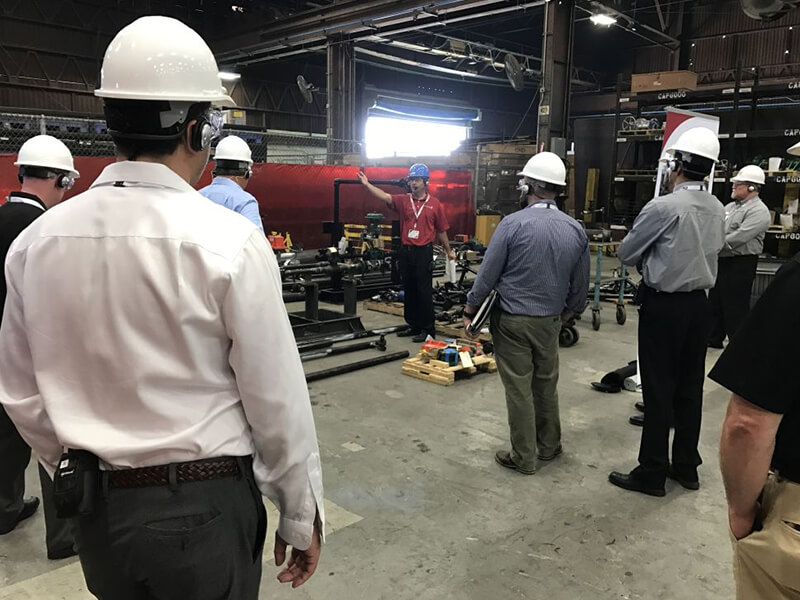“I do not think that the radio waves I have discovered will have any practical applications.” Henrich Hertz
Radio waves were discovered by German physicist Heinrich Hertz in the nineteenth century, and he was famously skeptical of the importance of his findings. However, his discovery had far more practical applications than he could have ever imagined. From recreational activities to critical communication systems, radios play a vital role in connecting people and facilitating information exchange.
While they may seem to be incredibly complicated, radios are not all that difficult to understand once you break down their parts. So, to help you grasp the different types of radios and their functionality, here I will look closely at how radios work, why they’re so important to so many industries, and how to choose the right radio type for your needs.
How Do Radios Work? Understanding the Basics
A radio system facilitates communication by transmitting information wirelessly. The transmitter converts the information (like voice or data) into electrical signals, which are then sent through the air as invisible waves. The receiver picks up these waves and converts them back into a usable form, like sound or data. This allows for communication over distances without a direct physical connection.
Exploring Different Types of Radios
Radio is a versatile technology, and different types of radios are useful for different applications. I know you’re already familiar with some of them, and I’d like to look more closely at a few here to talk about what they’re used for and why.
Ham Radio

Ham radio, also known as amateur radio, allows licensed individuals to communicate with other radio operators worldwide. It’s popular with hobbyists and professionals alike.
Features:
- Wide range of frequencies: Ham radio covers a broad spectrum of frequencies, enabling communication over varying distances.
- Diverse modes of operation: Operators can choose from various modes, allowing for experimentation and flexibility.
- Emergency communication capabilities: Ham radio plays a crucial role in providing communication during emergencies and disasters.
- Self-reliance: Ham radio operators often build and maintain their own equipment, fostering technical skills.
- Global community: Ham radio connects individuals with a shared interest in radio communication.
CB Radio
Citizens Band (CB) radio is a land mobile radio system that allows short-distance communication between individuals. CB radio is popular among truck drivers, off-road enthusiasts, and recreational users. You’ve likely seen it used in movies and television shows.
Features:
- Limited frequency range: CB radio operates on a specific set of frequencies, so it’s not great for long distances, but is perfect for keeping people connected who are geographically close.
- Simple operation: CB radios are relatively easy to use, requiring minimal technical knowledge.
- Affordable: CB radios and equipment are generally inexpensive.
- Mobile communication: CB radios are commonly used in vehicles, enabling mobile communication.
- Channelized operation: CB radio uses a set of numbered channels for communication.
Two-Way Business Radios (Land Mobile Radio – LMR)

Two-way business radios, also known as land mobile radios (LMR), are used by businesses and organizations for communication among their employees. These radios are designed for reliable and efficient communication in various work environments.
Features:
- Dedicated frequencies: LMR systems often use dedicated frequencies, minimizing interference.
- Repeaters: Repeaters can extend the range of LMR systems.
- Private channels: LMR systems can be programmed with private channels, ensuring secure communication.
- Durable construction: LMR radios are typically rugged and designed to withstand harsh environments.
- Advanced features: Some LMR radios offer advanced features such as GPS tracking, text messaging, and data transmission.
- Safety: Since LMR systems allow real-time communication without delays or interruptions, they can enhance workplace safety by allowing crews to relay information and instructions easily.
- Ease of use: Using two-way radios like LMRs is generally easy for people of all technical skill levels.
Walkie Talkies
Walkies Talkie is, simply, another name for a two-way radio, commonly used for short-range communication They operate on a signal frequency band and provide instant, real-time communication using a push-to-talk (PTT) function. As I advise many of our customers, they do not rely on external networks, making them a reliable option for various industries, including security, hospitality, and emergency responders. Additionally, they are the ideal tool for guided tours and on-site communication, and our range of two-way radios is suitable for industries such events & trade shows, houses of worship, and education as well as loud environments in automotive manufacturing, construction, and food and drink facilities.
Features:
- Battery Life: Walkie talkies offer long-lasting battery life, ensuring extended use in the field.
- Channel Scan: Allows users to quickly locate an available channel for communication.
- Licensed Frequency: Some models operate on a licensed frequency, reducing interference for secure communication.
- Range Doubling: Certain models use advanced technology to extend their coverage beyond standard ranges.
- Signal Frequency Band: Operates on UHF or VHF bands, depending on the environment and communication needs.
Walkie talkies remain a cost-effective, durable, and efficient communication tool for industries requiring dependable two-way radios without reliance on cellular networks.
Marine Radios
Marine radios are specifically designed for communication on waterways. They are essential for safety and navigation, allowing communication between vessels, shore stations, and emergency services.
Features:
- VHF frequencies: Marine radios operate on very high frequency (VHF) bands.
- Dedicated channels: Marine radios use dedicated channels for different purposes, such as distress calls, navigation, and routine communication.
- Digital Selective Calling (DSC): DSC allows for automated distress calls and other digital messaging.
- Weather alerts: Many marine radios receive weather alerts, providing crucial information for boaters.
- Waterproof construction: Marine radios are typically waterproof and designed to withstand harsh marine environments.
FM Radios
FM radio (Frequency Modulation) is a method of transmitting information, such as audio, by varying the frequency of a carrier wave. FM radios are used for everything from local and national radio stations to tour guide systems.
Here are some key features of FM radio:
- High fidelity: FM radio generally offers better sound quality than AM radio, with a wider range of frequencies and less susceptibility to noise and interference. This makes it ideal for music broadcasts.
- Shorter range: FM radio waves typically have a shorter range than AM radio waves, especially at higher frequencies. This is because FM waves travel in a more direct line-of-sight path.
- Less affected by atmospheric conditions: FM radio is less prone to distortion caused by atmospheric conditions like thunderstorms, which can disrupt AM signals.
- Stereo sound: FM radio can transmit stereo sound, providing a more immersive listening experience.
The Importance of Radios in Various Workspaces

Radios are crucial in countless industries, particularly where reliable communication is essential. They are used in workspaces such as:
- Public safety: Police, fire departments, and emergency medical services rely on radios for critical communication.
- Construction: Construction workers use radios to coordinate tasks and ensure safety.
- Transportation: Truck drivers, pilots, and maritime professionals use radios for communication (including warnings about safety hazards) and navigation.
- Manufacturing: Manufacturing facilities use radios for communication among employees and to monitor production processes.
- Security: Security personnel use radios to coordinate patrols and respond to incidents.
Radios keep these folks connected without relying on Wi-Fi or cellular data, ensuring consistent and uninterrupted communication.
Choosing the Right Radio for Your Needs
When it comes to choosing the radio you need, you should consider a few variables to help with your decision. I recommend keeping the following in mind as you look through your options:
- What will you use it for? What is the intended use of the radio? Do you need it for recreation, business, emergency, or some other use?
- How far do you need it to reach? Is a short-range radio system sufficient for your needs, or do you need something that reaches across several miles?
- What features are important to you? Make a list of the features that are essential for your needs, such as durability, weather resistance, and advanced functionalities.
- How much do you want to spend? Set a budget and choose a radio that offers the best value for your money.
- Are the options compliant with safety regulations? While generally considered a low-risk method of relaying information, radio frequency safety is still important to keep in mind.

Conclusion
Radios have evolved significantly since their inception, offering a diverse range of technologies to meet various communication needs. From the hobbyist using ham radio to the professional relying on LMR systems, radios play a vital role in connecting people and facilitating information exchange. Now that you have an understanding of the different types of radios and their features, you can make an informed decision about which radio to invest in.







